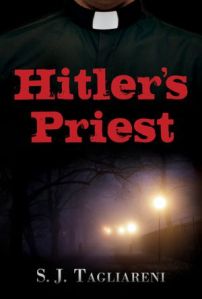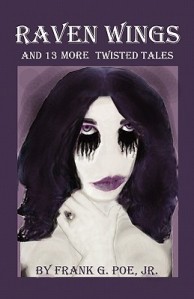 The history of World War II and the question of why an entire nation would fall under the spell of a fanatical fascist dictator like Adolph Hitler is one that is endlessly fascinating. Hitler’s Priest, by S.J. Tagliareni, a former Catholic priest, explores this topic with a thoughtful and extremely well-researched novel based on actual historical figures and depictions of events that shaped the entire world.
The history of World War II and the question of why an entire nation would fall under the spell of a fanatical fascist dictator like Adolph Hitler is one that is endlessly fascinating. Hitler’s Priest, by S.J. Tagliareni, a former Catholic priest, explores this topic with a thoughtful and extremely well-researched novel based on actual historical figures and depictions of events that shaped the entire world.
Meet Hans Keller: he is an atheist, and a highly intelligent man with an eidetic memory who catches the eye of the Third Reich’s Minister of Propaganda, Josef Goebbels. He has been had-selected to be a mole, infiltrating the ranks of the Vatican’s Catholic hierarchy in order to exert influence upon their decisions, thus playing a key role in the shaping of the Nazi’s concept of a new Germany. He attends the same classes and undergoes the same training as anyone studying to be a priest does, at the Gregorian University in Rome. But, instead of focusing on the next world, Hans instead focuses on “his relationship with the Fuhrer and the lofty goals of this world.”
Goebbels understood that the four years Keller would spend in the seminary was a large expense in terms of time, even though the potential gains could prove enormous for the Third Reich. That’s why he devises a way for Hans to be a help even before the four years are up, through a person he has visit Keller who gives him specific tasks to perform: Erich Hanke. But, what happens when Hans finds his thoughts become more clouded and his morals starting to crumble is something that Goebbels did not anticipate fully, and Keller, himself, had not thought possible would happen: Hans begins to question the morality of the role he is supposed to perform, as Hitler’s priest.
It is easy for people of today to think to themselves that there is no way that they would ever fall under the sway of powerful, hypnotic leaders like Adolph Hitler and Goebbels; but, imagine that you are living in a country where such rulers hold sway. You are only told things from one point of view, and become indoctrinated from an early age in the beliefs and teachings of the Third Reich. With only a very narrow world view presented to you, and the troubles your nation facing blamed upon one race of people, who hold beliefs different from yours, it likely would not be too difficult to see that a hatred could develop within your bosom for the other race.
Being brought up under such a regime would be a terrible thing, as the only “truth,” you would be exposed to would be that of leaders with a definite agenda, bent on ruling the entire world, and molding it to their wills. You would either need to go along with their agenda, or be steam rolled into oblivion, thrown into a concentration camp along with the Jews, Catholics, and gays, or anyone who had a different viewpoint.
Salvatore J. Tagliareni, the author of Hitler’s Priest, writes with great authority on the subject. He was a Catholic priest himself, and one of his mentors was the psychotherapist Viktor Franklwho lived under the Third Reich. Frankl had everything taken away from him, his family, his homeland, his job, and his freedom; yet, he did not hate those who had treated him that way.
There is an enormous cast of characters in Hitler’s Priest who add their POVs to the plot. Each one is interesting, and we get to see how various people who were involved in either the regime of the Third Reich or who had lived under it, felt. The chapters alternate between these people and their POVs, and reading about them helps give the reader a fully realized portrayal of how the various players involved viewed their roles.
As examples, we read about the real-life, historical brothers, Stefano and Severio Pittelli, and how their courage “changed lives on both sides of the Atlantic.” Also, we read about people like the Roman Catholic, Karl Hunsecker, the German ambassador to the Vatican who lived in Rome. Though Karl is a member of the Third Reich, he feels morally conflicted, and expresses his opinions about the direction that Germany is headed towards in its treatment of the Jews to Cardinal Pietro Agnelli. There are many, many more examples of people who the author writes about and fleshes out in detail in Hitler’s Priest. They help make history come alive for the reader.
Hitler’s Priest by S.J. Tagliareni is a page-turning book whose characters will live in your thoughts long after you finish reading it. You will be entranced by the author’s depictions of the characters and events that led up to the rise of Adolph Hitler and the Third Reich, and will want to keep reading until late into the night. I have read many historical accounts of WWII and the Third Reich, but often, you don’t really gain a complete understanding of how it was like to have lived during that time unless you read a novel about people who lived under the regime of the Third Reich, like the great novels The Boy In Striped Pajamas and The Book Thief. If you loved reading those novels and others about the Third Reich, or you’re a history buff, you’re sure to want to add Hitler’s Priest to your reading lists today!









